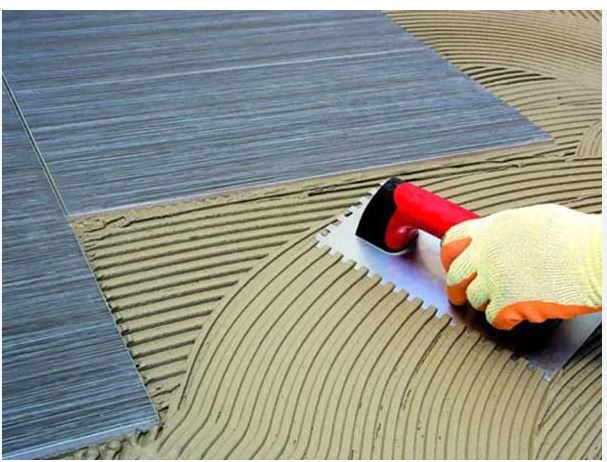Tiles are a popular flooring and wall covering option due to their durability, aesthetic appeal, and low maintenance. However, over time, even the most expertly installed tile systems can exhibit signs of wear, including cracked grout lines or damaged tile surfaces. Similarly, concrete structures—whether in residential, commercial, or industrial applications—are subjected to stress, environmental exposure, and chemical attack, which can lead to cracks, spalling, and structural weakness.
Maintaining and repairing tiled surfaces and concrete structures is not merely about aesthetics. It is a fundamental necessity for preserving the integrity, function, and longevity of a building. This blog explores the essentials of tiles grouting material and concrete repair, explaining their importance, selection criteria, and application processes.
Understanding Tiles Grouting Material: Purpose, Types, and Selection
Tiles grouting material serves a vital role in tile installations by filling the spaces between tiles, providing stability, and preventing moisture ingress. Without proper grouting, tile installations can deteriorate prematurely, leading to costly repairs and replacements.
1. Purpose and Function of Grouting Material
Grouting material performs multiple key functions in a tiled surface:
- Structural Bonding: Grout holds tiles in place by providing a firm bond that reduces movement. It helps distribute stress and prevents tiles from shifting or cracking under pressure.
- Water Resistance: In areas such as kitchens, bathrooms, or balconies, grout acts as a sealant that prevents water from seeping beneath the tiles, reducing the risk of mold growth and substrate damage.
- Aesthetic Enhancement: Grout is available in various colors, allowing it to blend seamlessly or contrast stylishly with tiles. It contributes significantly to the overall look of a tiled space.
2. Types of Grouting Materials
Choosing the right tiles grouting material depends on tile type, joint width, exposure conditions, and usage. The most common types include:
- Cementitious Grout: Made from a blend of cement, water, and additives, this is ideal for most interior applications. It is affordable and easy to work with, though it may need sealing to prevent staining or moisture penetration.
- Epoxy Grout: Resistant to stains, chemicals, and moisture, epoxy grout is excellent for areas exposed to grease or chemicals, such as commercial kitchens and industrial floors. It is also highly durable but more challenging to install.
- Furan Resin Grout: A highly specialized grouting material, furan resin is ideal for areas exposed to harsh chemicals. It requires expert installation and is often used in laboratories or chemical plants.
3. Key Considerations When Selecting Grout
Proper grout selection ensures a longer lifespan for tiled installations. Here are some critical considerations:
- Joint Width: Narrow joints often require unsanded grout, while wider joints need sanded grout to avoid cracking.
- Water Resistance: For wet areas, a waterproof grout (like epoxy) is essential to prevent moisture damage.
- Color Match and Stain Resistance: Depending on the tile color and desired finish, selecting the right grout color and type (stain-resistant or not) is vital for visual appeal and maintenance.
Techniques and Materials Used in Concrete Repair
Concrete is one of the most robust and widely used construction materials. However, it can deteriorate due to physical stress, chemical exposure, and environmental changes. Concrete repair is a systematic process aimed at restoring damaged concrete to its original strength, functionality, and appearance.
1. Causes of Concrete Deterioration
Understanding why concrete fails helps identify the best repair strategies. The most common causes include:
- Cracking and Shrinkage: These may occur due to temperature changes, overloading, or improper curing during initial construction.
- Corrosion of Reinforcement: When water and air penetrate the concrete, steel reinforcements inside can corrode, expanding and causing cracks and spalling.
- Chemical Attack and Environmental Exposure: Exposure to deicing salts, acidic environments, or marine conditions can degrade concrete over time.
2. Concrete Repair Materials and Their Applications
Selecting the right material is crucial for the durability and compatibility of the repair. Common options include:
- Cementitious Repair Mortars: These are pre-blended dry mixes used for patching and resurfacing. They are easy to apply and provide strong adhesion to existing concrete.
- Epoxy Injections: Used for structural cracks, epoxy resins penetrate and bond the cracked sections, restoring load-bearing capacity and preventing water ingress.
- Polyurethane Grouts: These are used in situations where water leakage is a problem. They expand upon contact with water and seal cracks effectively.
3. Steps in Effective Concrete Repair
Successful concrete repair involves more than patching visible damage. It requires a systematic approach:
- Inspection and Diagnosis: A thorough evaluation determines the extent and root cause of the damage. This may involve visual inspections, non-destructive testing, or core sampling.
- Surface Preparation: This is one of the most critical steps. All deteriorated or loose material must be removed, and the surface should be cleaned of dust, oil, and contaminants.
- Repair Application and Finishing: After selecting the appropriate material, the repair is applied using trowels, injectors, or sprayers. Curing is essential to ensure the longevity and strength of the repair.
Integration of Grouting and Concrete Repair in Long-Term Maintenance
While tiles grouting material and concrete repair may seem like separate concerns, they are often interrelated in building maintenance. A holistic approach that considers both can dramatically extend the lifespan of a structure.
1. Preventive Maintenance and Inspection
Regular inspections and preventive actions can reduce the need for extensive repairs:
- Routine Checks: Scheduled maintenance can identify early signs of grout failure or concrete cracks before they worsen.
- Moisture Control: Damp environments contribute to both grout decay and concrete damage. Using moisture-resistant materials and dehumidifiers can help.
- Sealants and Protective Coatings: Periodic application of sealants on tile grout and concrete surfaces can protect against stains, moisture, and weather-induced damage.
2. Compatibility and Material Matching
Using compatible materials during grouting or repair ensures effectiveness and prevents further issues:
- Expansion Compatibility: Materials with differing expansion rates can lead to cracks. Choose grout and concrete repair products with similar thermal expansion characteristics.
- Bond Strength: Whether patching concrete or re-grouting tiles, materials must adhere well to the base surface without delaminating.
- Durability Balance: A repair or grout material stronger than the surrounding surface may cause adjacent areas to fail. The solution should maintain structural balance.
3. Sustainable and Long-Lasting Solutions
Today, sustainability is a core concern in construction and repair. Eco-friendly and long-lasting materials are being increasingly used:
- Low-VOC Grouts and Repair Compounds: These reduce indoor air pollution and are safer for occupants and workers.
- Recyclable Materials: Some grouting and repair products incorporate recycled materials, reducing environmental impact.
- Longevity Focus: Investing in high-quality materials, even if costlier upfront, saves resources over time by reducing repair frequency.
Conclusion
Tiles grouting material and concrete repair are fundamental aspects of construction maintenance that play a critical role in both structural integrity and aesthetic quality. Proper understanding of material types, applications, and integration strategies ensures long-lasting performance and safety.
When it comes to tile installations, choosing the right grout—whether cementitious, epoxy, or resin-based—not only supports the tiles structurally but also protects them from moisture and wear. Likewise, concrete repair requires a tailored approach based on damage severity, environmental conditions, and material compatibility.
A combined maintenance strategy involving timely inspections, proper material selection, and expert application can safeguard your investment, maintain visual appeal, and enhance the lifespan of your property. Ultimately, the durability of both tiled and concrete surfaces depends on how well they are maintained, and the materials used in their upkeep.



